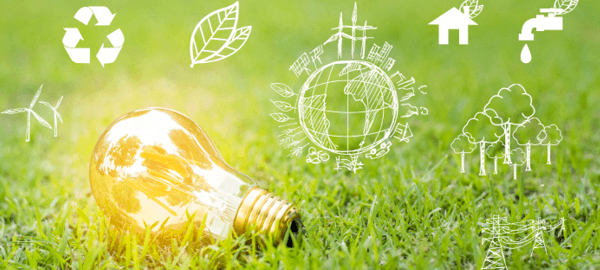Retail Info Systems Features Efficiency Tips from IGS Energy

The following article recently published in Retail Info Systems, a publication dedicated to the topics and events that most impact the retail industry. You can access the original article on the RIS site here.
For more insights from IGS Energy, visit our Energy Resource Center.
3 Steps for Retailers Building an Energy Efficiency Strategy
Reduce your energy usage, lower your bills, and make less of an impact on the environment. On paper, energy efficiency is a no-brainer. But for some retailers, the question of where to start and which changes will be most effective can stall progress.
The good news: Once you have a plan in place, energy efficiency practices can help lower your consumption and bills almost overnight. But you need a plan to get there.
Here’s a roadmap for getting started with energy efficiency for any retailer, big or small.
1. Bring the Right Team to the Table
To successfully benchmark and understand the full picture of your energy data (see step two below), you need internal and external resources. Working with an expert in managing and analyzing energy data is tremendously helpful, especially for retail organizations with small teams and few internal resources. Then, get the right team members in the room.
Your operations and maintenance teams may have insight into your energy usage, but they’re not typically the ones paying your energy bills. Retailers are most successful in implementing energy efficiency efforts and controlling costs when operations, maintenance, and finance/accounting teams work together.
2. Benchmark Your Energy Data
The key to getting started with an energy efficiency game plan is simple: Benchmark your energy usage.
After your energy review, a real-time monitoring program can be implemented to help identify and quantify opportunities for energy efficiency improvements, benchmark usage before improvements, and verify the impact after improvements. With an understanding of where your retail operations are today, you can determine when and how your business is using energy and the impact on your energy costs. Work with your energy expert to review your bills and hourly interval meter data. From here, with a better understanding of your usage patterns, you can develop a strategy with achievable and trackable goals.
3. Understand Your Energy Bills
About half of your energy bill is driven by your energy demand. Demand is a measurement of your largest interval of power used during the billing period, while consumption is a measurement of the total quantity of power used during the billing period. Using a car as an analogy, demand would be the fastest you drove, and consumption would be the total number of miles driven.
Energy efficiency efforts typically help you save money by lowering the demand required to run your operations. So, being able to flex your energy load through efficiency solutions is one of the simplest ways to reduce your energy spend. For example, an efficient LED light bulb may use 13 Watts continuously while it is on, while an incandescent light bulb uses 60 Watts continuously while it is on, saving you about 80 percent in costs. Reviewing a year’s worth of interval meter data can identify if the peak demand you’re being billed for happens often. If peak demand is infrequent, work with your operations and maintenance teams to help determine which equipment and processes are causing the demand.
Understanding your energy usage data is also beneficial if you’re considering powering your business with a cleaner energy source. Investing in solar, for example, might be both a smart environmental and economic move, and knowing when and how your business is consuming power can help you craft a clean energy strategy that meets your needs.
It’s also important to understand how the energy landscape in the U.S. is evolving, and the impact of efficiency practices on the grid. As more renewable energy sources come online, we’re experiencing a critical transition, shifting from a stage where the grid reacted to demand to one where generation fluctuates more. In turn, retailers will need to be more flexible. Requiring less energy to run your retail business reduces not only your bill but also removes demand from the grid.